John Nixon, Four Decades, Five Hundred Prints, Geelong Gallery
Saturday 18 November 2023 to Monday 11 March 2024.
The distillation of an entire artistic practice and career into four decades of prints made between 1982-2020 suggests a lens through which to focus our appreciation on just one aspect of the life of Australia’s most significant and enduring abstract artist, John Nixon (1949-2020). The 20th century avant-garde project which aimed at collapsing the distinction between art and life offered Nixon — who was born in Gadigal/Sydney — a way into his work. Coupled with his practical, “non-objective” philosophy of engaging commonly available “everyday” materials like newspaper; cardboard; hessian; industrial-grade timbers; Perspex; and housepaint; the set of works on display — many for the first time — at the Geelong Gallery, are further constrained by the typical and recognisable artistic vocabulary he set out consistently across his career. In this way Nixon might be understood an antipodean Ellsworth Kelly, a regional Piet Mondrian. Yet the austerity of the geometrically focussed materials that Nixon allowed himself to exhibit lies in stark contrast to the greatest period of human consumption ever known in the history of the world, which he lived within. (The International Energy Agency report, “Oil 2023”, claims peak oil is still a while away.) This means his institutional presentation often tends to frame him as some kind of secular saint, with the simple elegance of a Benzene ring. Nixon’s singular, some would say dogged, focus on abstraction often belies what he called an “expanded model of work,” which could variously include music, design, jewellery-making, and curating. Keep this in mind when you visit the Geelong Gallery, the prints have not been selected by Nixon himself, but lovingly curated by his wife Sue Kramer and his daughter Emma Nixon, along with Trent Walter who is renowned for his tireless work at Negative Press. The resulting catalogue, designed by Yanni Florence, contains texts by eighteen artists, curators, and historians (including Sue, Emma, and Trent), elucidating aspects of Nixon’s life through a medium-specific selection of his output.
Writing for Discipline in 2011, Francis Plagne began a critical reappraisal of Nixon’s work from the 1980s by noting its complexity, and challenges to an art-institutional system which prefers clean, uncomplicated lines for the presentation of artwork:
Nixon’s output of the 1980s is an attempt to refuse the high-modernist appropriation of the avant-garde practice of the monochrome by the tradition of painting, and place it rather in a distinctly ‘low’-modernist line of avant-garde art which stresses the material and technical simplicity of the art object; a lineage which, like Duchamp, views the painting itself as little more than a ready-made.1
In what follows, I offer seven watchwords in advance of a present encounter with four decades of Nixon’s work, since 1982, in which I seek to emphasise its experimentalism, and furthermore to offer some productive criticisms of a practice which continues to affect the lives of the many people who encountered Nixon (and his consecutive matters) during his lifetime in profound and enduring ways.
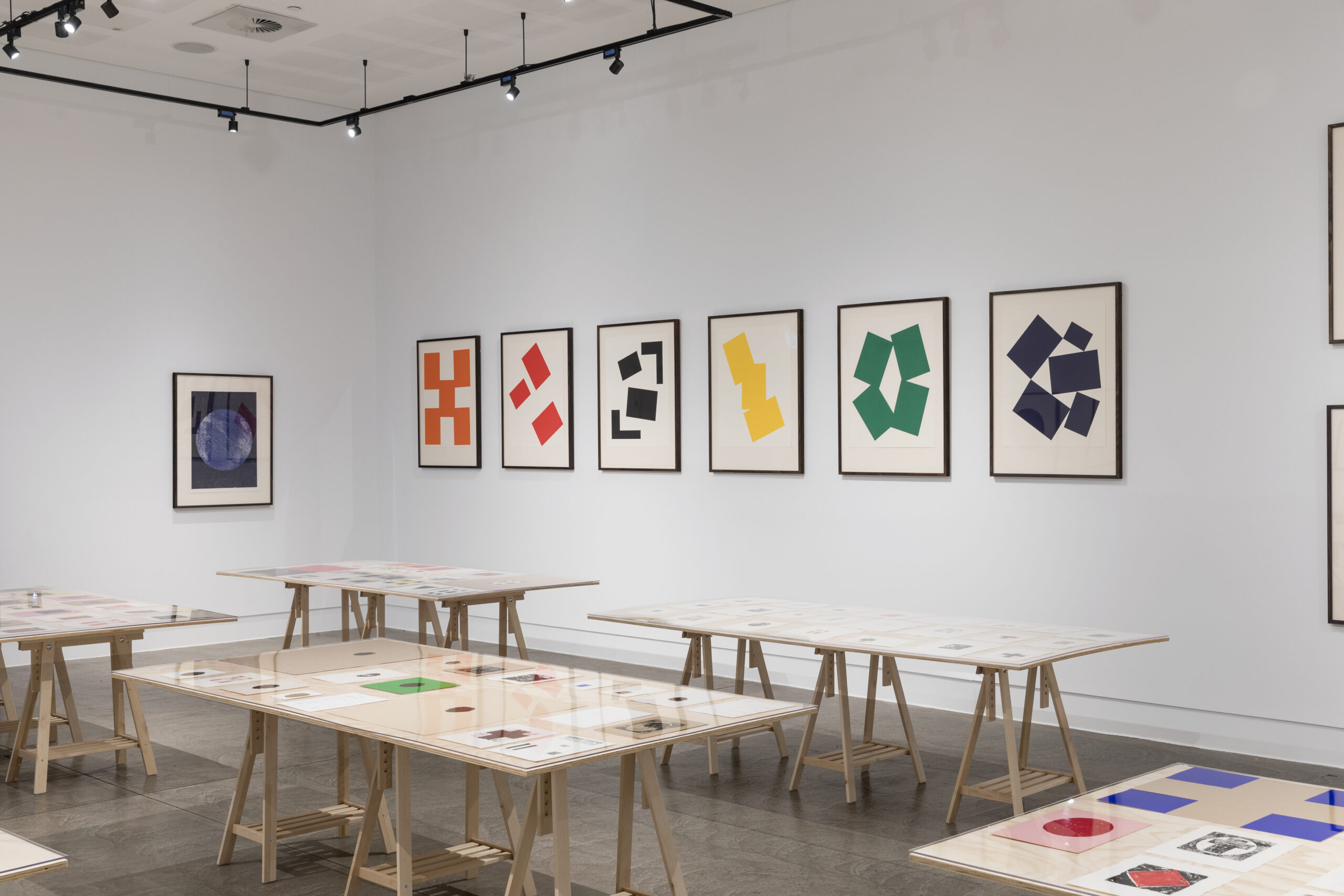
1. Matrix
In one corner of the gallery a simple ply and Perspex vitrine displays a set of matrices Nixon used to make some of the prints on display. The word matrix is often used for signifying arrays of numbers, formed as tables or grids in rows and columns, or the ground upon which these arrays occur. In Five Hundred Prints the term appears as a didactic, elucidating a fundamental part of the process for printmaking: when inks or dyes are transferred to the (usually paper) medium which creates the (serial) work. Going further, artist and theorist Bracha L. Ettinger has conceptualised what she calls the Matrix as a part of the symbolic register in the field of psychoanalysis because, as she argues: “Symbol is wider than the Phallus, and we have to introduce non-phallic symbolic spheres alongside the phallic sphere.”2 First applied to mathematics in the mid 19th century by the English mathematician and Royal Society fellow James Joseph Sylvester (1814-1897), the term matrix also bears a mineral and geological resonance as it is used to essentially describe the structure of rocks.3 Etymologically the word derives from the Latin word for “womb” (perhaps a conflation of mater with genetrix). In 1995 Ettinger published a book called The Matrixial Gaze, which counters the phallic symbolism of the gaze formulated earlier for psychoanalysis by Jacques Lacan. Ettinger describes the alternative model for the expansion of the symbolic register, something that might initially be seen as anathema for understanding Nixon’s work. But is “non-objective” a synonym for “non-symbolic”? It doesn’t appear so, and the figure-ground relation that is emphasised by the printmaking process extends into matter what is otherwise tied up in language games.
Matrix: How We Live is also the name of an exhibition at the Melbourne School of Design which ended on the 20th of October this year.4 The London-based feminist architects’ practice Matrix was formed by a separatist cohort of women studying architecture in a male-dominated profession. This is a connection and scope far beyond that conceived by Nixon, clearly, but one that raises significant questions about the institutionalisation of art, one which — in the broadest possible sense — can be said to have been the purpose of Nixon’s practice in artistic abstraction. In fact, Nixon’s directorship of the Institute of Modern Art in Brisbane between 1980-81, punctuates his Art Projects gallery that itself was seemingly inspired by his one-room gallerist in London, Barry Barker Ltd, where he lived for six months in 1977-8. This year Ettinger, who is based in Tel Aviv, made headlines in November when she resigned from the documenta 16 Selection Committee, citing procedural reasons that meant she could “no longer contribute to this process” of selecting an artistic director. Soon the remaining committee would also resign.5
In Naarm/Melbourne, Nixon’s collaborator and the artist friend who had opened his last exhibition, Mike Parr, was terminated by both his and Nixon’s gallery representative, Anna Schwartz Gallery, following a scheduled performance. It is tempting to think through how Nixon might have responded to the present crisis. I heard Nixon’s commitment to the monochrome in the closing line of Parr’s performance, Going Home, which had led directly to his termination by Schwartz: “the monochrome is a cover-up.” Hearing this, I couldn’t help but also think of Georges Didi-Huberman’s assessment of the magic-words of art history in Parr’s focus on the term, during his appearance on ABC Radio National on the 12th of December.6
Inquiring of Trent Walter, “which is Nixon’s most minimal print?” Victoria Perin extracts an answer for the exhibition catalogue which seems obvious, if it was not so odd. “The potato prints,” which Walter points to, are just that. The print matrix is a regular potato, sliced to make a flat surface on which to apply colour and transfer it like a stamp. Patrick White’s Three Uneasy Pieces was the last work of fiction he published, in 1987. The first piece, “The Screaming Potato,” links White’s pre-WWII beginnings as a writer through to the 1980s excesses of figures like Christopher Skase, who opened the Marina Mirage in Port Douglas the same year. Magic realism seems unhelpful as a reference for Nixon’s work, but it does complicate the usual charge of high modernism. That is, until the term’s connection to Neue Sachlichkeit is uncovered. Potato = Art.
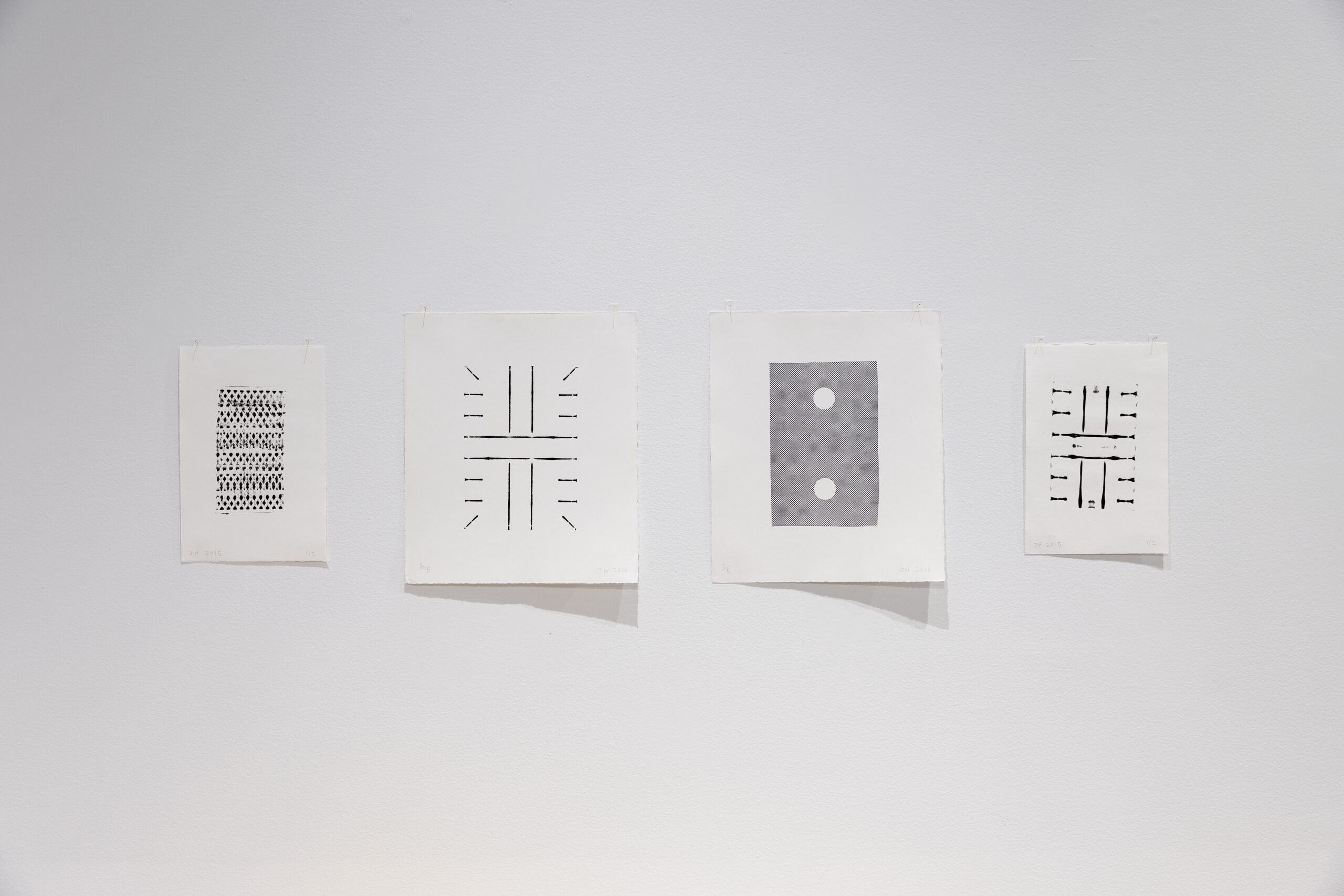
2. Potato
In the 1990s, when Nixon was more established and perhaps describable as a mid-career artist, his work becomes more playful and relaxed. Seven-inch 45rpm recordings with emerging star-artists like Marco Fusinato, or dual exhibitions with canonical European avant-garde figures like Piero Manzoni, are equal to the same, clear vinyl records or children’s books Nixon made for his daughter Emma, who was a young child at the time. They lie here side by side.
The potato was its own matrix, the soil it grew in becomes the pigment to be applied, first to the hessian sacks that they have been placed in by agricultural workers. In 1988 Nixon made a series of “Potato Hessian Paintings” consisting of cut pieces of the rough-woven weave stretched over wooden frames so that the insides of the bags face outwards. They appear like a like a starched crucifixion.7 Furthermore, it is arguable that these are not paintings but prints, and closest to frottage (cf. part 5).
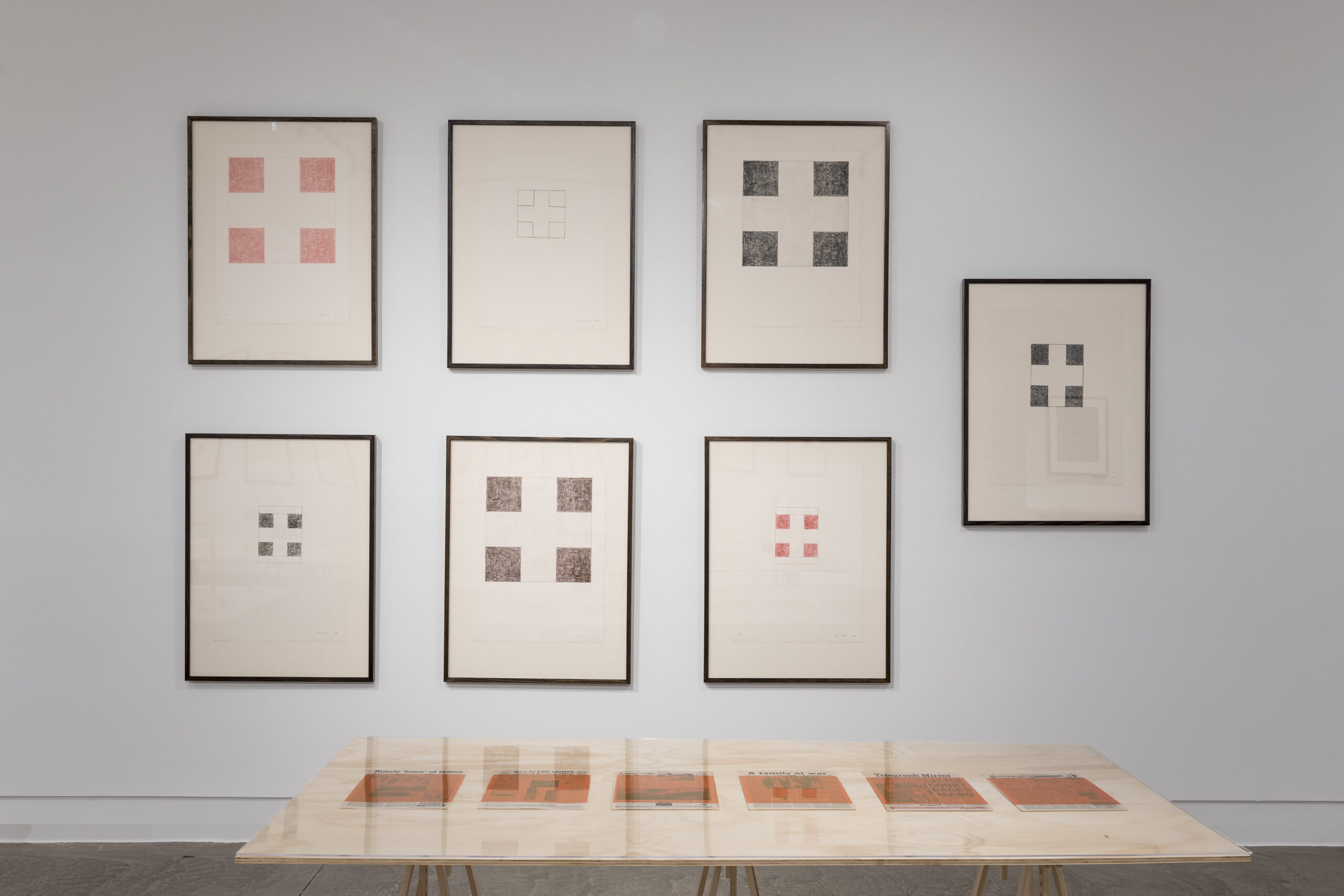
3. Orange
In 1995 Nixon produced a series of screenprints in Sydney with printmaker Rafael Butron. On the 16 March 1995 edition of the Daily Telegraph Mirror a large orange square is printed over a selection of pages to create a varied set of fifteen transparent monochromes that use pages from the daily newspaper as a technical support (Editions 1, 2, 3, 4, 5, 6, 8, 12, and 15 appear in the Geelong Gallery exhibition). Thus begins the subset Experimental Painting Workshop: Orange. Is it possible to write about the persistent appearance of one colour in Nixon’s work? Why did he choose orange? What associations are we meant to make with the colour? What associations can we make? He called it “a colour filled with energy and light.” It began when he was a new father. The Experimental Painting Workshop had emerged out of Nixon’s time in London during the 1970s. There is one Nixon painting on display at the Geelong Gallery exhibition, at its entrance. It is a large enamel work on composition board from 1995 that won the Geelong Gallery Contemporary Art Prize in 1996. Black + Orange Cross is a large orange cross on a black ground, it is a kind of self-portrait of the type that goes closest to symbolic representation, despite its geometric simplicity. The cross is an icon so formally similar to the fundamental image of Christianity that it bears returning to, phallic perhaps but also problematised by the print matrix. Roger Butler claims: “For Nixon the image was derived from Suprematism,” but suprematism as an idea and not a proper name makes it more interesting.
Experimentalism leads to the assessment of Nixon’s work as an “ambivalent index of its moment,” which is how writer, curator, and publisher Helen Hughes has framed his practice writing for Artforum. This ambivalence is a feature of Nixon’s approach, which is encapsulated in a somewhat surprisingly liberal framework for his entire practice at the outset of the catalogue for Five Hundred Prints: “I don’t like these terms ‘painter’ or ‘printmaker’, I just like to be called an artist. So therefore, I can do whatever I want.” Without trying to misread Nixon’s intent here, it is worth re-reading this quote, from an interview he gave to Cathy Leah in Melbourne on the 15th of August 2000, against the grain (as it were). It is a fundamental tenet of the liberalism of the era to be free to “do what thou wilt,” as the English occultist Alistair Crowley put it in 1909. In Nixon’s case this meant the freedom to paint only in orange for a decade.
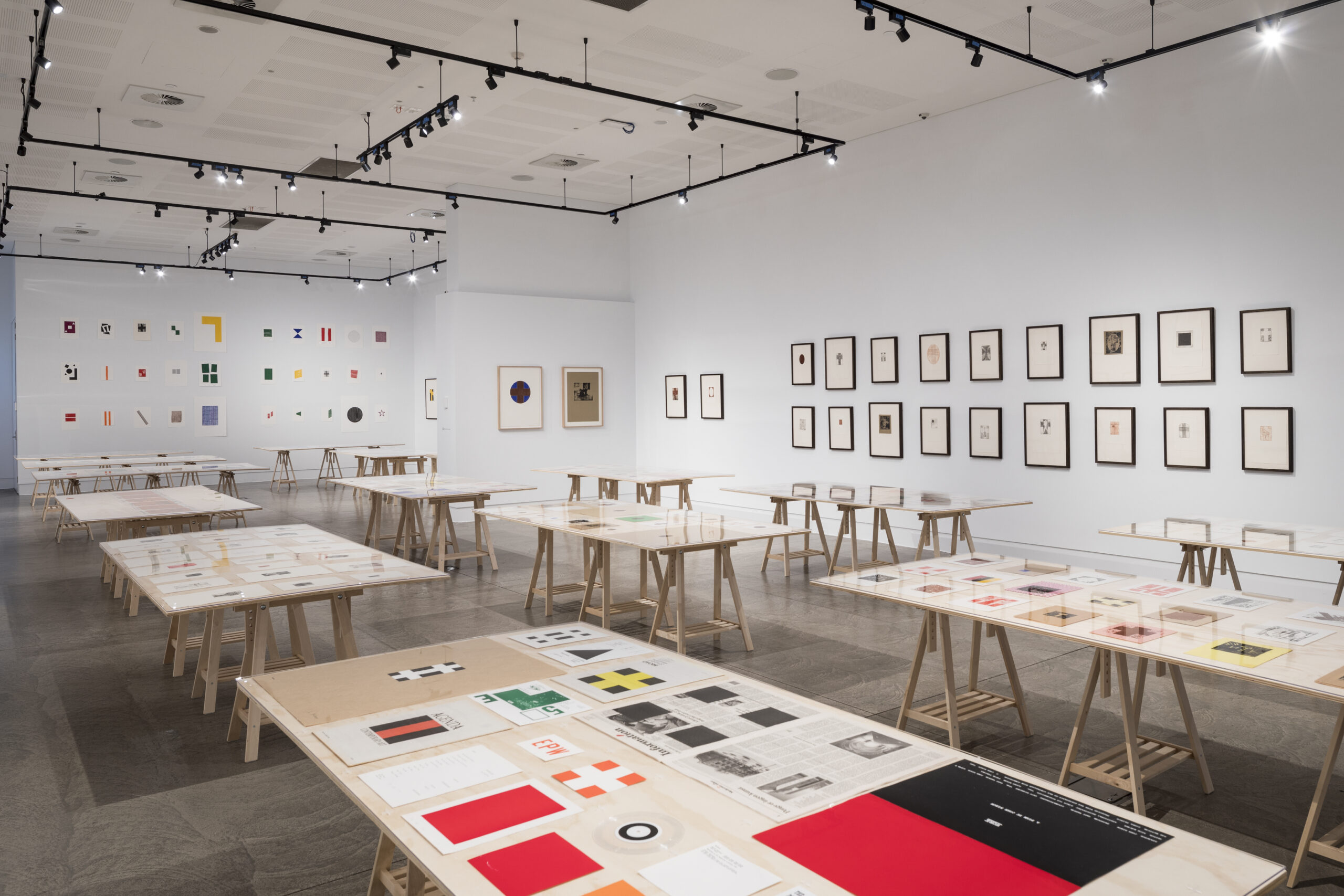
4. “Waste Not Want Not”
The emergence of the climate crisis as a discourse for accommodating global thought, has always struck me as the logical endpoint of liberalism. “No, we cannot do whatever we want because the world is dying.” Perhaps this means we are no longer in the experimental era. Rather we are in a phase of history that compels us to act, even if we don’t know how to. Perhaps the most abundant index of industrial production to appear in Nixon’s work is plastic (acrylic paint is a plastic polymer mixed with water and pigment). An OECD report published in 2022 noted global plastics production doubled between the years 2000 and 2019, reaching 460 million tonnes.
The elegant simplicity of the call to use everything, again, reveals the logic for Nixon’s non-ironic appropriation of historical styles. Constructivism and historical avant-gardes, Arte Povera, Mono-Ha, etc. The total art of John Nixon even revives the landscape tradition at certain points in his work, the set of all sets of artwork.
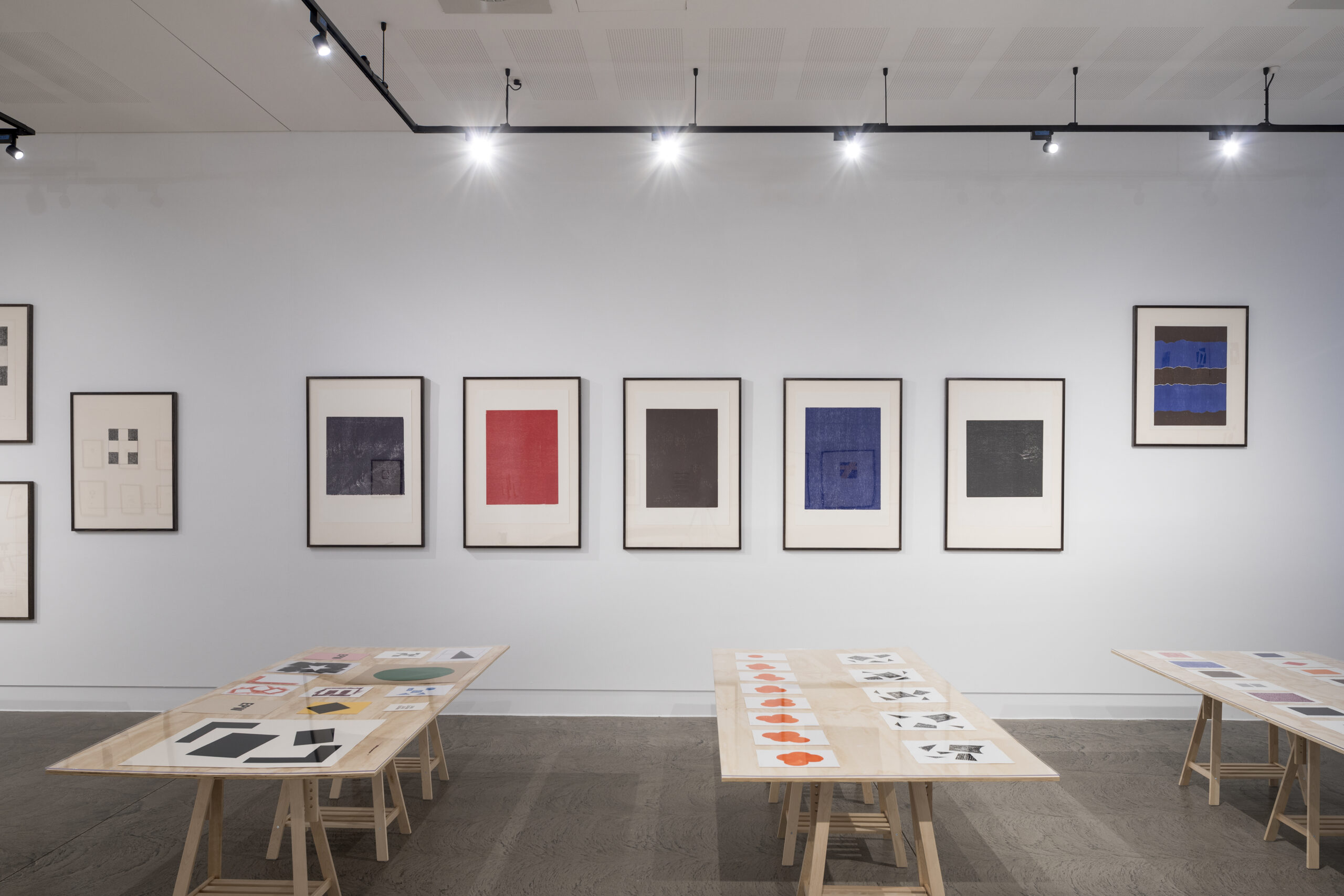
5. Frottage
The fetishism of a practice that obsesses over matter is most present in Nixon’s appropriation of the Surrealist practice of frottage. The erotic connotation of the term, to rub, suggests that a ludic encounter with inorganic matter is natural. Specific work, for example a circular work that looks like the imprint of the bottom (!) of some type of cannister that has also been embossed into the paper, was painted in grey as a relief in an edition of two in collaboration with Marian Crawford (Untitled 2010). Complete authorial control over his work is symptomatic of the age in which Nixon lived. It doesn’t seem farfetched to consider the orgiastic angle that appears as a vector of this approach. These works are listed as relief prints, but the index of a randomly deployed piece of timber, to make visible its grain structure Untitled (Set H), becomes nearly pornographic—which, of course, all images ultimately are.
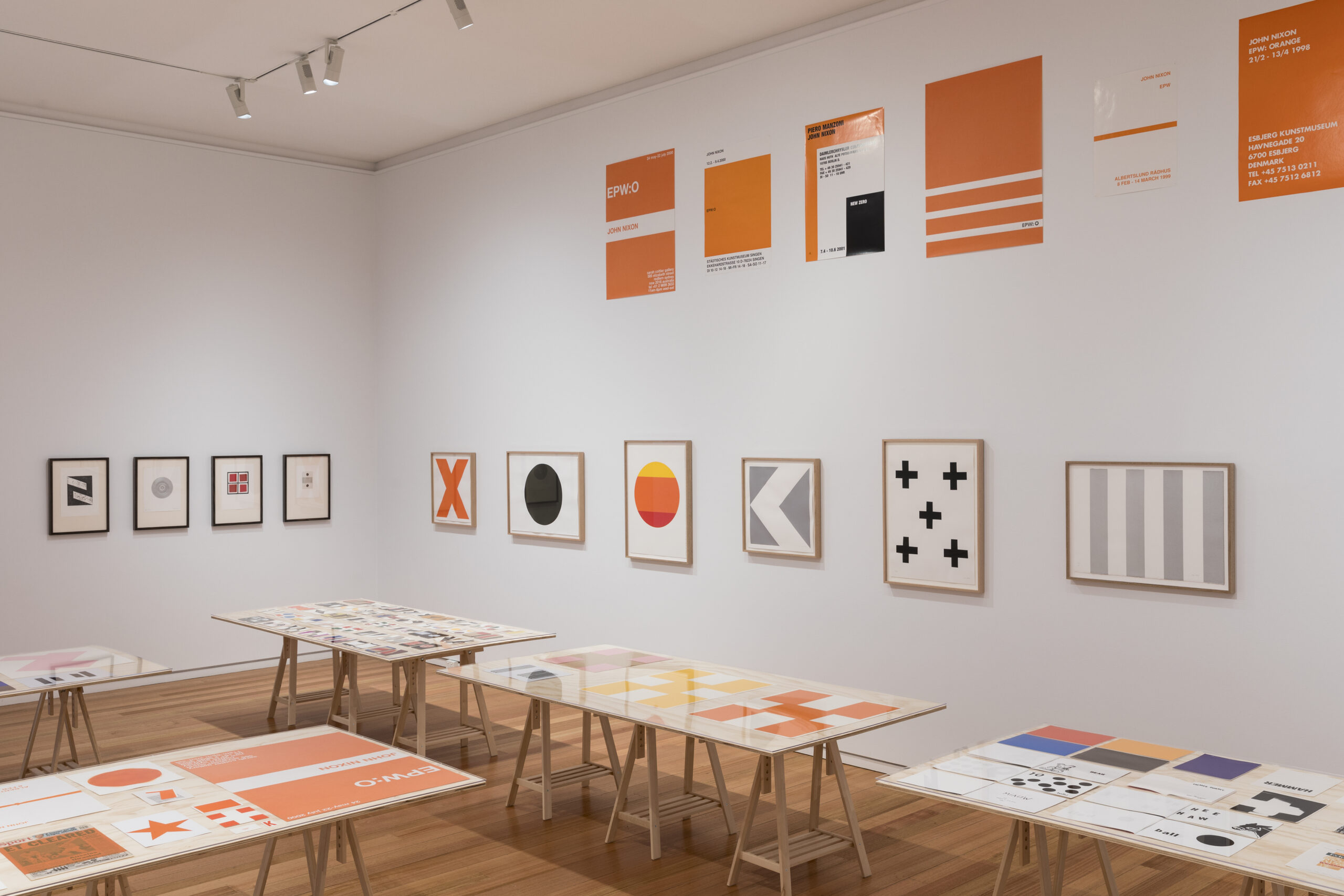
6. Montage
I listened to the Goo Goo Dolls’ song, Iris, written for the OST of the film City of Angels (1998), playing soon after I left Five Hundred Prints. Sitting in the café across the road from Geelong Gallery — coincidentally the venue is called tutti — I do the usual thing, take down notes and capture fleeting ideas that have occurred to me whilst inside the galleries. You’re reading the results of this common critical practice above. It struck me, however, almost to the point where I was openly weeping into my flat white, that the song Goo Goo Dolls’ MOR-ballad was written for the Hollywood remake of Wim Wenders feature-length film Wings of Desire (or in the German, Der Himmel über Berlin), originally released in 1987. Nick Cave and the Bad Seedsappear as performers in the film, so too do Crime and the City Solution. The sky above Berlin is an apt a location as any from which to view Nixon’s practice from afar. It may even begin to explain the ongoing artistic connection between Melbourne and Berlin. Many of the commercial posters (assumedly designed with Nixon’s direct input) that are included in Five Hundred Prints, function as artwork advertisements for exhibition Nixon held both in Australia and internationally. One is for a show with Piero Manzoni and New Zero at Daimler-Chrysler Contemporary in Berlin in 2001. Another is for John Nixon: Groups + Pairs 2016-2020 at Anna Schwartz Gallery in Naarm/Melbourne, originally scheduled for the March/April period in 2020 but postponed due to the COVID19 restrictions and then remaining on display for the remainder of the year, following Nixon’s death in August.
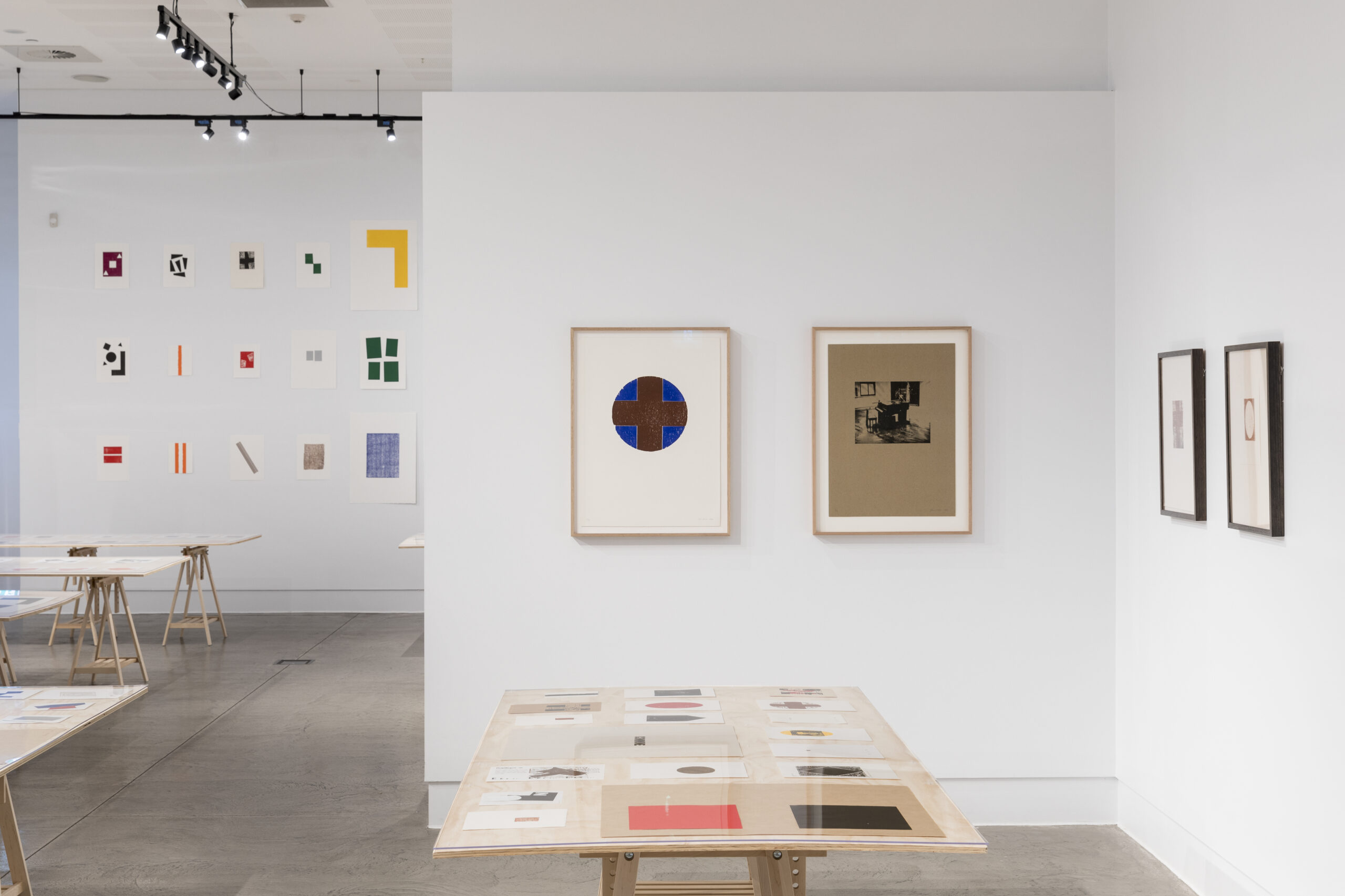
7. The Cross
Many of the people who I speak with about meeting and working with John talk about the almost religious revery with which John approached his work and relations to other people. Helen Hughes has quoted Mike Parr as describing Nixon’s “devotional simplicity.” His daughter, Emma — who’s dedicated works by her late father are included on one table of prints made during the late 90s, when she was a young child — explains to me a significant character trait she repeatedly witnessed growing up: “He couldn’t lie.” She was commiserating with me following a story I regaled her about the time I was invited by John to write an exhibition text for an upcoming show he had in Germany in 2017. I was towards the end of my graduate studies in Melbourne and naturally I saw this opportunity as an immediate validation of my writing. Upon presenting a sketch of my ideas for the text to John, via email, well in advance of the show and asking for his sense of the direction I should take, he replied: “I think it’s best we abandon this project.” I dissembled at his frankness. Today it remain a powerful memory—an email!
My sketch from 2017 began with the following line: “We have entered a period of ascendent iconoclasm.” Nixon’s work negates the iconic because it operates as iconoclastic. The permission of a cross, however secularised and basic, as the enduring symbol of his work — even as self-portrait — returns me to the sense that Nixon’s spirit, and belief, in his approach to his life as such successfully captured the indistinctions between representation and reality. To me this is what “non-objective” means: lack of distinction. These things are just signs in the street. We use them for direction. To where? Here.
Giles Fielke is a writer and researcher of artist film.
